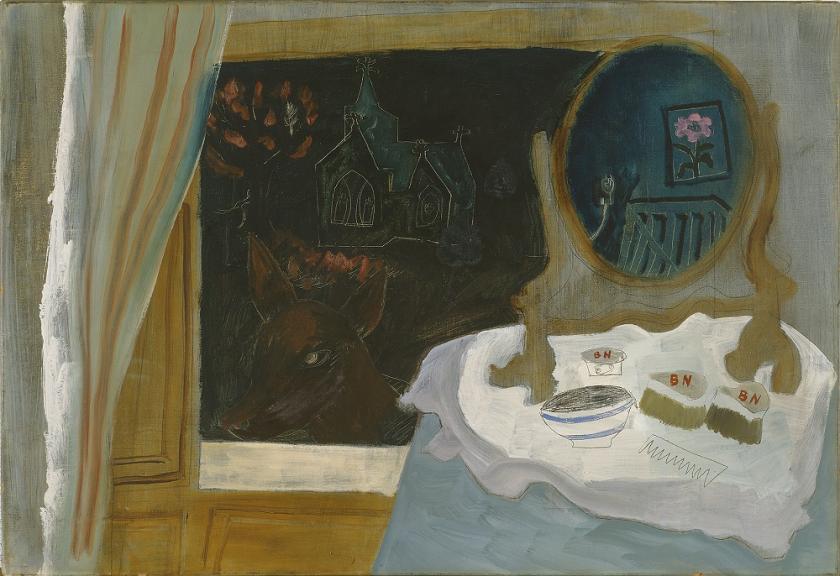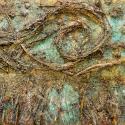On this dark, silent night as the world holds its breath in anticipation, everything is still but for the occasional whisper of a breeze ruffling the curtains. It is so quiet that a deer, that most nervous of creatures, has tiptoed all the way up to the window, gazing beyond us to a point further inside the room. The mirror on the dressing-table allows us to share the view into the room behind us, and there is a glimpse of a cot, the Christmas rose that hangs over it symbolising the Virgin Mary. And yet, something is wrong. It is far too quiet, the cot is empty: the deer has come to pay homage to a child who isn’t there.
Ben Nicholson’s atmospheric scene is weighted down with events in his personal life, and his treatment of the central event of the Christmas story, the birth of a child, gives expression to the overwhelming, painful nature of parental love. When Nicholson made this picture, he and his first wife, the painter Winifred Nicholson, had two young children and were expecting their third. But their marriage was already under strain, and by the autumn of the following year they would have separated.
the window serves to heighten the sense of isolation, but also to introduce multiple viewpoints and picture planesThe intense loneliness of the picture is emphasised by Nicholson’s initials, “BN”, which are prominent on the items on the dressing-table, and the picture weaves Nicholson’s personal drama into the Christmas narrative. The view of the church, with all its connotations of congregation and rosy-cheeked carol-singers, serves not only as an emotional counterpoint but as a knowing reference to traditional nativity scenes, in which the architectural presence of the stable stands for the founding of the Christian church.
A modernist device favoured by Matisse, the Nicholsons, Christopher Wood and David Jones amongst others, the window setting serves to heighten the sense of isolation in this picture, but also to introduce multiple viewpoints and picture planes. The mirror builds on this still further, by adding a complex sense of space in which we occupy a central position, the deer looking beyond us into the room, which we also have a view of in the mirror. Nicholson’s great achievement is to weave the personal and the universal while avoiding sentimentality. On Christmas Eve, when a veil is temporarily lifted between the ancient past, the future and the present, Nicholson’s window and mirror serve as gateways across time, for himself and for all of us.
- This painting is on display as part of Horizons at Jerwood Gallery, Hastings until 3 January








![SEX MONEY RACE RELIGION [2016] by Gilbert and George. Installation shot of Gilbert & George 21ST CENTURY PICTURES Hayward Gallery](/sites/default/files/styles/thumbnail_125_x_125_/public/mastimages/Gilbert%20%26%20George_%2021ST%20CENTURY%20PICTURES.%20SEX%20MONEY%20RACE%20RELIGION%20%5B2016%5D.%20Photo_%20Mark%20Blower.%20Courtesy%20of%20the%20Gilbert%20%26%20George%20and%20the%20Hayward%20Gallery._0.jpg?itok=3oW-Y84i)






Add comment